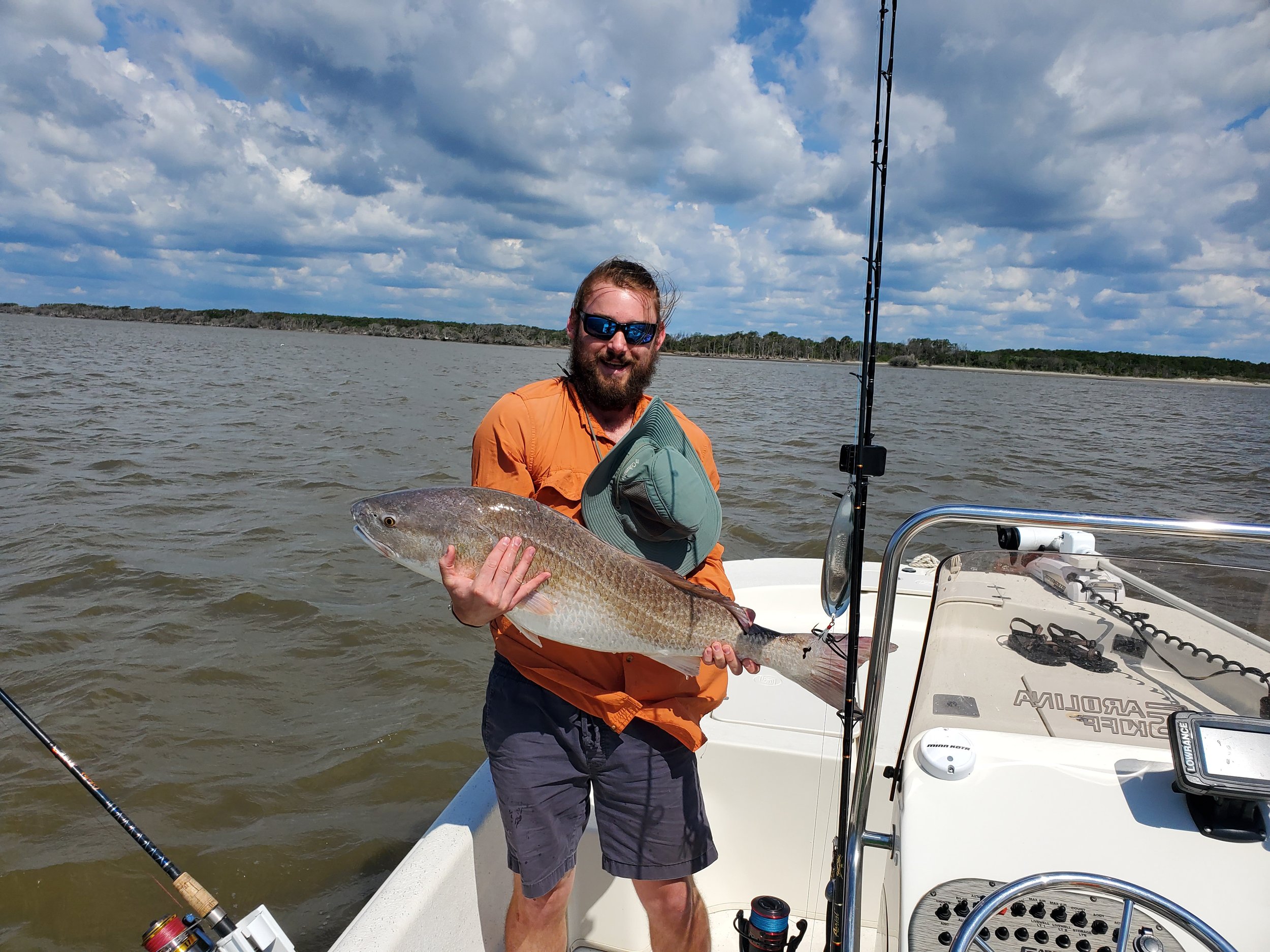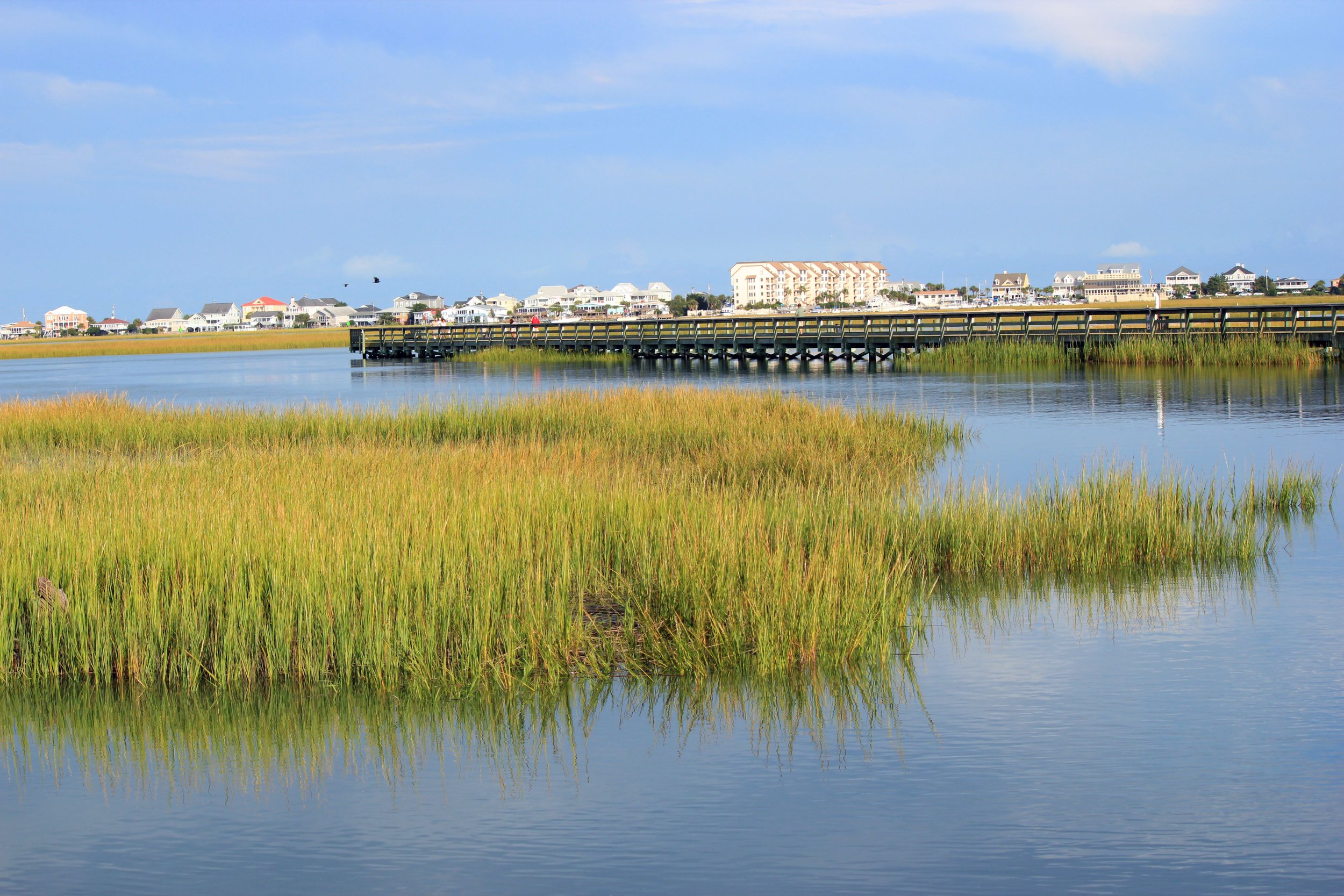
Where We Fish
FISHING CHARTERS IN GEORGETOWN AND PAWLEYS ISLAND
Before emptying into the Atlantic, the Waccamaw, Black, Sampit, Pee Dee, and Santee Rivers flow through and around the city of Georgetown, SC. The deltas, marshes, and bar built estuaries formed by the river's flow and tidal currents, along with the jetties built for the towns industry, make Georgetown a hotbed for any type of South Carolina saltwater fish. North Inlet, Winyah Bay, and the Santee Delta are all excellent fisheries.
Pawleys Island is a beautiful seaside community filled with southern charm and a slow pace lifestyle that leaves many tourists coming back year after year. While the town was established in 1938, Pawleys Island itself had houses on it long before in order to enjoy the seabreeze while escaping the cruel August swamp just inland of the barrier island.
Pawleys and Midway Inlets separate the island itself from the mainland portion of Pawleys. Both Inlets connect through little creeks and offer great angling opportunities. The shallow water and marshes make a perfect habitat for bait fish and shrimp, allowing Red Fish, Spotted Seatrout, Flounder, and many other species to thrive. In the Spring and Fall, surf fishing is a great option on Pawleys and Litchfield Beach. During these times, mullet migrate along the beaches bringing large Redfish and Tarpon with them. Fishing for Spotted Seatrout and Sharks is also effective during these times.
Getting into North Inlet from Georgetown can be a challenge if you aren't familiar with Mud Bay, but get ready for some world class fishing if you make it in. Light tackle, fly fishing, top water, the tried and true Carolina rig, and many other fishing methods work well in this enormous marsh. On certain days the water is so clear here you won't believe you're fishing in South Carolina.
Winyah Bay is often the main attraction for fishers traveling to Georgetown. Tidal currents combine with the flows of the Pee Dee, Black, Sampit, and Waccamaw Rivers create islands, mud flats, creeks, oyster beds, marshland, and sandbars, allowing countless fishing hot spots for whatever is on your bucket list. Jetties line the mouth of Winyah and sit just above, or a few feet under the surface, creating some of the best fishing on South Carolina's coast. Rising and falling tides flow over these rock structures, carrying large schools of bait, and attracting tons of hungry sea monsters.
WINYAH BAY
Cedar Island splits the Santee River ten miles before it reaches the Atlantic. Its basin stretches as far west as Greenville, SC and as far north as Hickory, NC, creating the second largest river on the east coast. The flow of this river combined with the tide, creates two large deltas. Thousands of oyster beds, mud flats, and sand bars are hidden in this delta, creating perfect areas for large predators to wait. Tidal creeks, marshland, and small islands create the perfect environment for menhaden, mullet, and shrimp to thrive. With this amount of bait attracting large fish, your chances are high to hook into a Bull Red, Gator Trout, Doormat Flounder, or even a Megalops Atlanticus, better known as Tarpon!
Santee River Delta
Learn More About Pawleys Island
While there is great fishing in the inlets surrounding Pawleys Island, the shallow water is challenging for fishing boats holding more than two people. A short drive south will bring you to Georgetown, a nice change of pace from the developed beaches of Litchfield and Pawleys Island. The five rivers flowing through the county of Georgetown create much larger inlets, bays, and protected barrier islands that will make you feel like you’re in a different world that has been lost by time
On the western side of Pawleys the Waccamaw River separates the town from the rest of Georgetown County. The brackish water swamp winds along the western spine of the peninsula and is home to alligators, several different species of birds of prey, and many other species of wildlife. Birding is excellent along this river during different times of the year as well as freshwater fishing opportunities for Brim, Largemouth Bass, and even Striped Bass.






